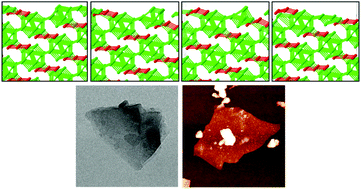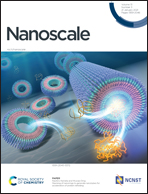Exfoliation of boron carbide into ultrathin nanosheets†
Abstract
Liquid phase exfoliation (LPE) is a method that can be used to produce bulk quantities of two-dimensional (2D) nanosheets from layered van der Waals (vdW) materials. In recent years, LPE has been applied to several non-vdW materials with anisotropic bonding to produce nanosheets and platelets, but it has not been demonstrated for materials with strong isotropic bonding. In this paper, we demonstrate the exfoliation of boron carbide (B4C), the third hardest known material, into ultrathin nanosheets. B4C has a structure consisting of strongly bonded boron icosahedra and carbon chains, but does not have anisotropic cleavage energies to suggest that it can be readily cleaved into nanosheets. B4C has been widely studied for its very high melting point, high mechanical strength, and chemical stability, as well as its zero- and one-dimensional nanostructured forms. Herein, ultrathin nanosheets are successfully prepared by sonication of B4C powder in organic solvents and are characterized by microscopy and spectroscopy. Density functional theory (DFT) simulations reveal that B4C can be cleaved along several different crystallographic planes with similar energetic favourability, facilititated by an unexpected mechanism of breaking boron icosahedra and forming new boron-rich cage structures at the surface. Atomic force microscopy (AFM) shows that the nanosheets produced by LPE are as thin as 5 nm, with an average thickness of 31.4 nm and average area of 16 000 nm2. Raman spectroscopy shows that many of the nanosheets exhibit additional carbon-rich peaks that change with laser irradiation, which are attributed to atomic rearrangements and amorphization at the nanosheet surfaces, consistent with the diverse cleavage planes. High-resolution transmission electron microscopy (HRTEM) demonstrates that many different cleavage planes exist among the exfoliated nanosheets, in agreement with DFT simulations. This work elucidates the exfoliation mechanism of 2D B4C and suggests that LPE can be applied to generate nanosheets from a variety of non-layered and non-vdW materials.

- This article is part of the themed collection: 2021 Nanoscale HOT Article Collection


 Please wait while we load your content...
Please wait while we load your content...
